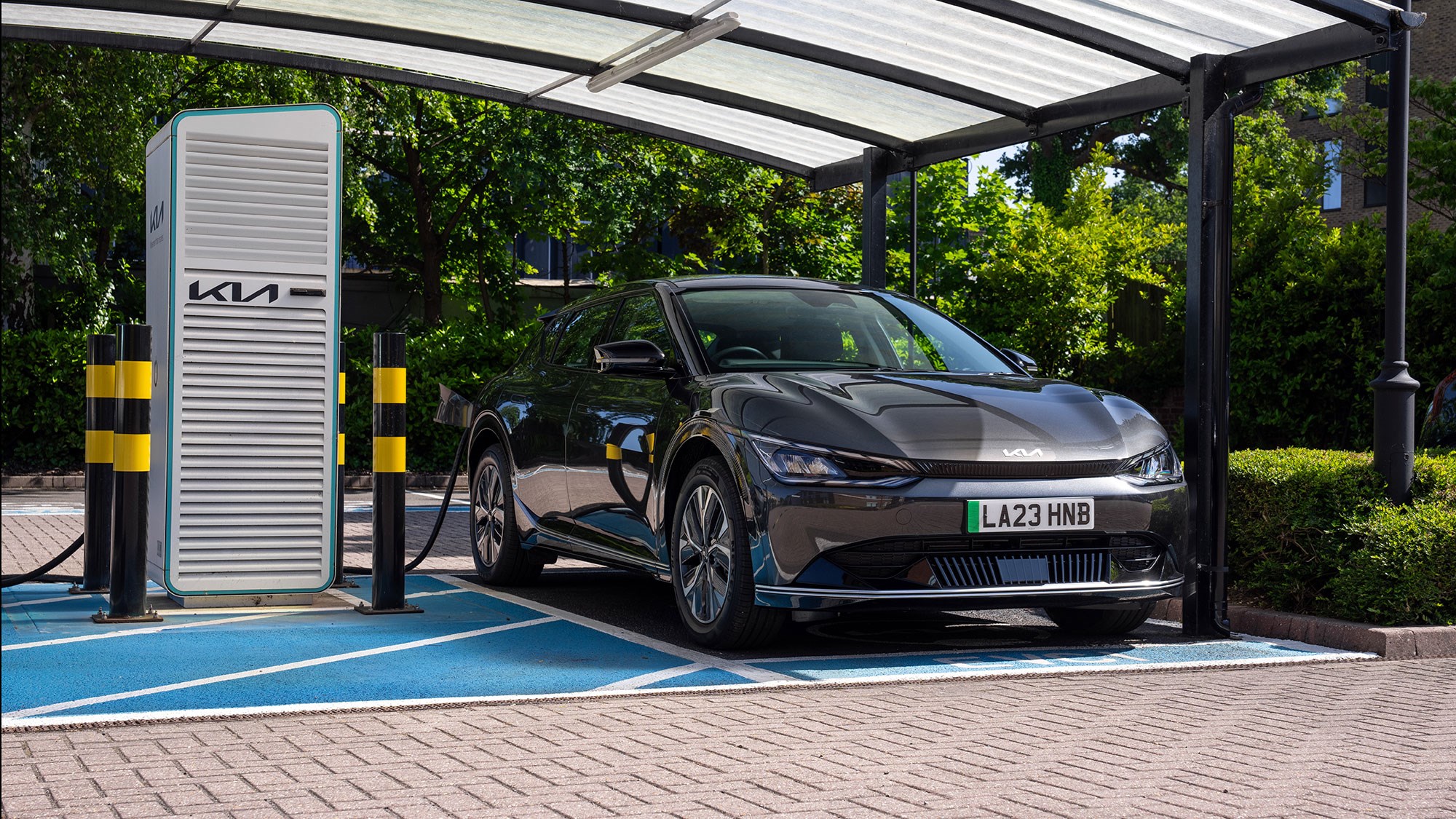Table of Content
-
- What Are Electric Vehicles?
- Switching to Electric Vehicles
- Future of Electric Vehicle's in 2023
- Future of electric cars
- Hybrid electric vehicle's
- The future of electric vehicle's: Battery Technology is key
- The future of electric vehicle's: costs are equalizing
- The future of electric vehicle's: charging infrastructure has to keep pace
- Utilities shepherd charging expansion
Electric cars 2024 and 2023 |Electric vehicles (EVs) are not just on the fast track with Porsche and Tesla whooshing by, EVs are likewise going to be a typical sight on dirt roads and rough territory. Portage, Chevy, Hummer, Tesla, and the upscale Rivian are among the vehicle makers trying to take advantage of the huge SUV and pickup truck market with new electric models.
As per the Money Road Diary, the presentation of rock-solid EVs is transforming pickup truck followers into “unintentional tree huggers,” based on the volume of preorders and premium in destined-to-be-delivered models. Basically, the fate of electric vehicles is brilliant and expansive.
Purchasers are dazzled. There are countless preorders for the Hummer EV, Rivian’s electric pickup truck, and the modern Tesla’s Cybertruck, which seems as though it has limited out of a computer game. However, what has central avenue humming is the electric adaptations of the Passage F-150, due for discharge in Spring 2022, and Chevy Silverado pickup trucks.
Electric cars 2024 and 2023| Enormous vehicles are the most rewarding U.S. auto section. SUVs and hybrids represented a portion of all vehicles sold in the U.S. without precedent for 2020, and pickup trucks caught 20 extra percent of the U.S. auto market.
Clients are coming around to EVs. In spring 2020, 34 percent of study respondents might want to purchase an electric vehicle. In Walk 2021, the number developed to 51 percent. Comparative increments were seen globally, with interest in EVs generally multiplying in China, France, Germany, and the U.K.
Barron’s accounted for that Flautist Sandler investigator Alexander Potter gauges EV entrance at 45% of new vehicle deals by 2030, and 94 percent by 2040. He is foreseeing that the EV takeover of the worldwide auto industry will be finished in 19 years.

Electric cars 2024 and 2023. What Are Electric Vehicles?
As worries about air quality and an Earth-wide temperature boost develop, the benefits of electric vehicles, for example, decreased working expenses and a developing choice of models, become really convincing. You can say electric vehicles are the fate of transport.
Electric cars 2024 and 2023. Switching to Electric Vehicles
In the event that you drive to work in an internal combustion vehicle consistently, changing to electric vehicles is quite possibly the best thing you can do to help the climate. Probably the most unquestionable claims for changing from internal combustion to an electric vehicle are as per the following.
1. Better For The Environment
In spite of its obvious effortlessness, the ecological advantages of electric vehicles couldn’t possibly be more significant. Contrasted with their gas-controlled partners, electric vehicles emanate far fewer toxins over their helpful lives. The weakest populaces, who experience the ill effects of transportation outflows, can profit from this, as can the remainder of society.
2. Help The Growing Electric Vehicle Market
Supporting the expansion of the EV industry and increasing demand for electric cars and EV infrastructure by switching from a gas-powered to an electric vehicle 2023will make it easier for even more people to make the switch. Cleaner air and a better environment for all of us can be achieved by gradually replacing gas-powered vehicles with electric ones.If you want to help the environment and the climate by decreasing your carbon footprint, trading your gas-powered car for an electric one is a great idea.

3. Reduces Costs and Require Less Upkeep
Electric vehicles save their proprietors a normal of $4,600 over their lifetime because of lower fix and support costs than internal combustion vehicles. This is on the grounds that electric vehicles have fewer parts, no gas-powered motor, no oil, and diminished brake wear. Drivers of electric vehicles can benefit essentially from decreased upkeep requirements and use.
Future of Electric Vehicles in 2024 and 2023
The fate of the electric vehicles global market is extending at a CAGR of 21.7%, in 2024 and 2023 as would be considered normal to proceed. Development from 8.1 million units is expected to reach 39.21 million by 2030. Different variables, including stresses over contamination, are driving this quick development.
Electric cars 2024 and 2023. Future of Electric Cars
A rising assortment of all-electric vehicles are right now accessible, and electric vehicles are as of now a typical sight on the streets. The individuals who depend vigorously on diesel are seeing deals decline, particularly when countries like the U.K. have set a cutoff time of 2030 to end deals in ignition vehicles, and the electric impact is going full bore. Diminished costs and a more thorough determination of models are being met by more critical ventures and the extension of the charging foundation.

Hybrid Electric Vehicles
Present-day mixture electric vehicles(HEVs) use internal combustion gas-powered motors and battery-controlled electric engines to get around. HEVs are a cross-breed of customary vehicles. Hence, they have the power and scope of those vehicles and the benefits of low fuel utilization and insignificant exhaust outflows.
Right now, you can browse plenty of various mixture vehicle models. Some higher buy costs of an HEV might be recovered through fuel reserve funds or government motivators, however, HEVs are regularly more costly than tantamount traditional vehicles.
The Future of Electric Vehicles: Battery Technology is Key
Battery execution is critical to the electric vehicle experience, from driving reach and charging time to the vehicle’s lifetime. As per Stanford College, computerized reasoning has made re-energizing an EV in the time it takes to stop at a service station a more probable reality. Stanford fostered an AI program that is decreasing battery testing times by 98%. Previously, new battery innovations must be tried for months or years to decide how long they would endure.
The new SUVs and pickups include a long battery range, high-towing limit, and every one of the additional items ordinary of mid-range extravagance vehicles. For instance, Portage’s all-electric F-150 Lightning has a designated EPA-assessed scope of 300 miles. Chevy’s electric Silverado claims 400 miles.
The Future of Electric Vehicles: Costs are Equalizing
The Money Road Diary estimated that many individuals would change to an electric vehicle to set aside cash once the all-out cost of possessing an electric vehicle is lower than a practically identical gas-fueled one. Purchaser Reports stated that the cost in the U.S. has previously passed that boundary, while Vehicle and Driver say government tax reductions assume a huge part.
An essential Passage F-150 Lightning EV will cost about US$42,000, and the XLT will be around US$55,000. The beginning cost for a Rivian is US$67,500, Tesla’s Cybertruck is US$39,900, and the GMC Hummer is US$79,995. Obviously, choices and different charges can change these figures significantly.
Electric cars 2024 and 2023. The Future of Electric Vehicles: Charging Infrastructure has to Keep Pace
Building a charging framework has been a “chicken or the egg” question with respect to growing past armada vehicles, which return to a focal area to re-energize. Yet, there are signs that public charging stations are turning out to be more copious. A report from the Public Environmentally friendly power Research Facility said during the initial three months of 2020, public electric vehicle supply hardware (EVSE) developed 7.6 percent. Of that, immediate current quick chargers, which empower fast battery charging, extended by 10.6 percent. California was one of the public forerunners in this extension, becoming its charging framework by 9%.
However, it’s as yet insufficient to satisfy the expected EV needs. As per a new article in Forbes, an absence of a charging foundation could restrict EV reception, slowing down the fate of electric vehicles.
There are three distinct sorts of charging stations: Level 1, Level 2, and DC quick chargers (DCFC).
- Level 1 chargers are the slowest. They utilize a 120V AC outlet (in the U.S.) to add around 2-5 miles of reach each hour of charging.
- Level 2 chargers utilize a 240V AC outlet and add around 10-60 miles of reach each hour of charging.
- DCFCs are 480V DC and can add around 180-240 miles of reach for every hour of charging.
At present, 80% of EV drivers in the U.S. charge their vehicles at home, regularly utilizing either Level 1 or 2 chargers. In any case, as request develops for EVs, particularly for those not residing in single-family homes, public charging station organizations should grow.

Utilities Shepherd Charging Expansion
Utilities will assume a functioning part in EV charger development and the fate of electric vehicles. Southern California Edison’s (SCE) Charge Prepared Program assists business and land owners with sending the framework and hardware for electric vehicle (EV) charging stations in multifamily structures, public areas, and business areas. This program gives monetary impetuses, foundation, and specialized help. Last year, the pilot gained huge headway, getting 1,360 MW of energy stockpiling and introducing 1,442 new vehicle charging ports in 2020.
This year, Charge Prepared got an extensive lift from the California Public Utility Commission, which endorsed $436 million to help the establishment of 38,000 charging ports over the course of the following four years. The drive upholds the state’s aggressive supportability objectives and California Lead representative Gavin Newsom’s chief request to have all vehicles sold in the state be zero-outflow vehicles by 2035.
As per EV Associate, SCE’s Charge Prepared expects to introduce 50% of the chargers in state-assigned impeded networks. As EVs become more reasonable — the Tesla Model 3 is under $40,000, and the Toyota module Prius is under $30,000 — each local area will require charging stations.
Every News Update

